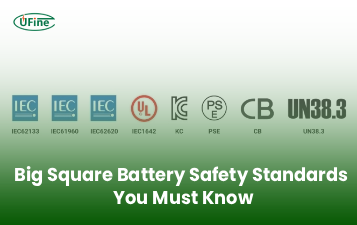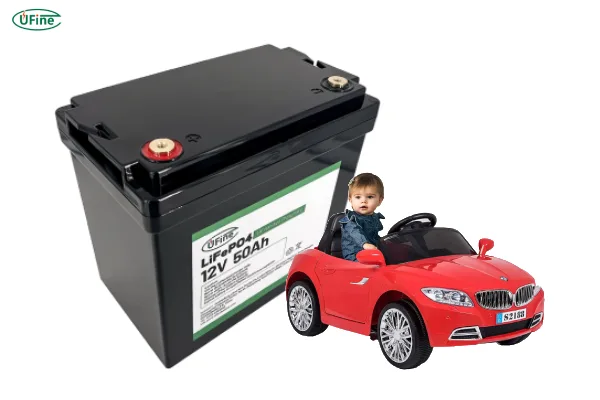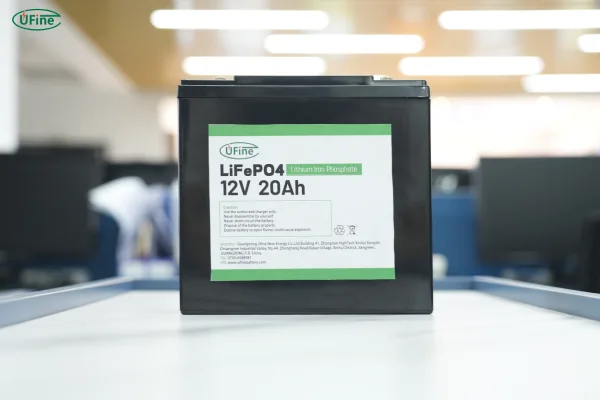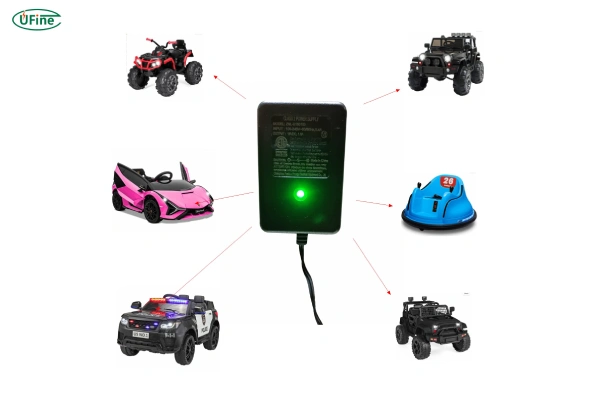
- Part 1. Why 12V?
- Part 2. Types of 12V batteries used in toy cars
- Part 3. Lithium vs. lead-acid: which is better for toy cars?
- Part 4. How long does a 12V toy car battery last?
- Part 5. What affects the life of toy car batteries?
- Part 6. Signs your toy car battery needs replacing
- Part 7. What Is the Capacity of a 12V Battery for Toy Cars? Is the Larger the Capacity, the Better?
- Part 8. 12V toy car battery charger
- Part 9. How to charge a 12V toy car battery
- Part 10. How to maintain a 12V toy car battery for longer life
- Part 11. Can you put a 24V battery in a 12V car?
- Part 12. Ufine Battery insight: upgrade to better 12V power
- Part 13. Final thoughts
- Part 14. FAQs
Part 1. Why 12V?
When it comes to powering ride-on toy cars, the 12V battery is the sweet spot. It’s powerful enough to drive motors and lights, but still safe for kids. Most ride-on cars on the market today are built around 12V systems, making them the go-to standard.
But here’s the real reason parents choose them: balance. A 6V battery might feel underwhelming, especially outdoors. On the other hand, a 24V system could be too fast for younger kids and harder to control. The 12V battery hits that “just right” performance for fun and safety.
Part 2. Types of 12V batteries used in toy cars
There are mainly two types:
Sealed Lead-Acid (SLA) Batteries
These are older but still widely used. They’re affordable and durable but heavier and slower to charge.
These are newer, lighter, and charge faster. They also last longer but cost more upfront.
Most toy cars come with SLA batteries by default because they’re cheap. But for those looking for better performance and longer battery life, lithium-ion is the way to go.
Lead Acid vs. Lithium Ion Batteries: A Complete Comparison
Part 3. Lithium vs. lead-acid: which is better for toy cars?
Let’s compare.
| Feature | SLA Batteries | Lithium Batteries |
|---|---|---|
| Weight | Heavy and bulky | Light and compact |
| Lifecycle | ~200–300 cycles | ~800–1 200+ cycles |
| Runtime | ~1–2 hours | ~2–4 hours or more |
| Charge Time | 8–12 hours | 2–4 hours |
| Cost | Low upfront | Higher upfront |
| Safety | Stable but sensitive to overcharge | Built-in BMS, more resistant |
| Feel | Reliable, but nostalgic | Fast, responsive, modern |
For everyday play and budget-conscious buyers, SLA works. But if you’re tired of frequent replacements and long charging times, lithium batteries are worth the investment.
Part 4. How long does a 12V toy car battery last?
Now, the big question: battery lifespan.
Runtime per Charge
- SLA: Typically 45 minutes to 1.5 hours.
- Lithium: Often 1.5 to 3+ hours, depending on capacity and usage.
Overall Lifespan
- SLA: Often 12–24 months with routine use.
- Lithium: Commonly 3–5 years—or more—thanks to higher cycle ratings.
Real-Life Factors That Shorten Life
- Heavy riders or uneven terrain
- Using high-speed settings
- Leaving batteries fully charged or drained for long periods
- Using aftermarket chargers rather than manufacturer-recommended ones
These little details can leave you with 30% less playtime than expected. But with attention, you can prolong your battery’s life—and your child’s smiles—with each charge.
Part 5. What affects the life of toy car batteries?
Like a child’s growing imagination, the life of a toy car battery is full of potential—but it’s fragile. While many assume a battery simply runs until it dies, the truth is more nuanced. Several key factors determine how long your 12V battery will actually serve you and your child.
1. Battery Chemistry
- Lead-Acid batteries degrade faster due to sulfation and deep discharge.
- Lithium-ion and LiFePO₄ batteries resist wear better, thanks to built-in BMS (Battery Management Systems) and higher cycle durability.
Ufine Battery offers customized lithium batteries equipped with advanced BMS for enhanced protection and longer lifespan.
2. Charging Habits
- Overcharging can swell or overheat a battery.
- Undercharging leads to deep discharge, damaging internal cells.
- Leaving the battery plugged in for days, especially SLA types, will reduce life significantly.
Best Practice: Charge after every use, unplug when full, and don’t leave batteries idle for months.
3. Storage Conditions
- Heat is the silent killer of batteries. Exposure to high temperatures (especially in a closed garage or hot car trunk) accelerates chemical breakdown.
- Cold storage can be damaging too, especially if the battery is fully discharged.
Store your toy car and battery between 10°C to 25°C (50°F to 77°F), partially charged if unused for long periods.
4. Weight Load and Terrain
- Heavier children, multiple riders, or rough terrain (gravel, grass, uphill) increase motor demand and battery strain.
- Frequent stop-and-go movement wears the battery faster than consistent riding.
5. Motor Power & Electrical Design
- Some toy cars draw power too aggressively for the stock battery.
- Upgrades to motors or lights without upgrading the battery lead to over-discharge and faster aging.
Tip: If your toy car seems to “drain fast,” the battery might not be the problem—it could be the load configuration.
6. Usage Frequency
- Ironically, infrequent use can age the battery faster than regular use, especially if it’s left discharged for long periods.
- Batteries are healthiest when cycled regularly and charged correctly.
Batteries are not immortal—but with care, attention, and proper sourcing, you can extend their life by 2–3x compared to typical use. Choosing a battery provider like Ufine Battery, known for reliability and customization, gives you a strong head start.
Part 6. Signs your toy car battery needs replacing
Your child’s toy car used to zip around the yard. Now it barely moves? That’s a red flag.
Here are the most common signs:
- Slower driving speeds
- Shorter playtime even after a full charge
- Charger LED always shows “charging”
- Swollen or leaking battery
- Battery gets hot quickly
Don’t ignore these signs. Failing batteries not only kill the fun—they could pose a safety risk.
Part 7. What Is the Capacity of a 12V Battery for Toy Cars? Is the Larger the Capacity, the Better?
When shopping for a 12V battery, one term keeps popping up: capacity, measured in ampere-hours (Ah). But what does it really mean, and is bigger always better?
Understanding Capacity
Battery capacity (Ah) indicates how much energy the battery can deliver over time.
- 12V 7Ah battery = Can theoretically deliver 7 amps for 1 hour, or 1 amp for 7 hours.
- 12V 10Ah battery = Delivers more energy before needing recharge.
This directly impacts runtime per charge.
CapacityTypical Runtime in Toy Car12V 4Ah~30–45 minutes12V 7Ah~1 to 1.5 hours12V 10Ah~2 to 2.5 hours12V 12AhUp to 3 hours
Is Bigger Always Better?
Not necessarily.
Advantages of Larger Capacity:
- Longer playtime per charge
- Less frequent charging
- Can handle higher loads or rough terrain
But Be Cautious:
- Heavier batteries may reduce toy car performance (especially SLA).
- Larger batteries may not fit inside original battery compartments.
- May require upgraded charger with higher current output.
Lithium Batteries: High Capacity, Light Weight
Here’s where lithium truly shines: You can enjoy larger capacity without the weight penalty. A 12V 10Ah lithium battery weighs significantly less than a lead-acid counterpart—keeping your toy car zippy and fun.
At Ufine Battery, we offer lithium battery customization from small 4Ah packs to large 15Ah+ units, tailored to fit exact dimensions and power needs of your toy car—without compromise.
Part 8. 12V toy car battery charger
Not all chargers are created equal.
Always use the manufacturer-recommended charger. Using an incompatible charger can overcharge the battery or fail to fully recharge it.
A proper 12V charger should have:
- Smart charging control
- Indicator lights
- Automatic shutoff feature
Lithium batteries especially must be charged with compatible chargers that include a Battery Management System (BMS). This keeps things safe and efficient.
Part 9. How to charge a 12V toy car battery
Charging is simple, but there’s a right way and a wrong way.
Steps:
- Turn off the car.
- Plug the charger into the charging port.
- Connect the charger to the power outlet.
- Charge until the indicator turns green.
- Unplug and store the charger properly.
Pro tips:
- Don’t leave it charging overnight unnecessarily.
- Avoid charging when the battery is hot.
- Charge after each use for best results.
Part 10. How to maintain a 12V toy car battery for longer life
Want your battery to last more than one season? Here’s how to take care of it:
- Don’t fully drain the battery: Stop use when power drops noticeably.
- Charge regularly: Even during storage months.
- Avoid overcharging: Especially with SLA batteries.
- Store in a cool, dry place: Heat kills batteries faster than anything.
- Disconnect if not in use for months: Prevent slow drain.
By doing these small things, you can extend the life of a 12V battery by up to 50% or more.
Part 11. Can you put a 24V battery in a 12V car?
Technically, yes. But should you? Absolutely not.
Here’s why:
- It could burn out the motor.
- The wiring may not handle the voltage.
- Speed becomes unsafe for kids.
- You may void your warranty or even cause injury.
If you want more speed or runtime, consider upgrading to a higher-quality 12V lithium battery instead.
Part 12. Ufine Battery insight: upgrade to better 12V power
At the heart of every great toy car is a powerful battery. And when it comes to quality and performance, Ufine Battery stands out.
We are a Chinese custom lithium battery manufacturer, offering:
- Lithium polymer (LiPo) batteries
- LiFePO4 for long-life use
- Cylindrical cells like 18650s
- High-temperature and high-rate options
- Ultra-thin battery designs
Whether you need a better replacement for your kid’s toy car, or want to upgrade a fleet of ride-ons for business, Ufine Battery can customize the size, voltage, capacity, and performance to match your needs.
Contact us today to get a tailored power solution built for safety, fun, and long life.
Part 13. Final thoughts
Choosing the right 12V battery for toy cars is more than just grabbing the first one you see online. From battery type to charger selection and long-term care, every detail matters—for safety, fun, and cost.
And if you’re tired of replacing cheap batteries that barely last, maybe it’s time to go for a better, smarter power solution. That’s where Ufine Battery comes in—backed by custom engineering, quality assurance, and a passion for powering the future.
Ready to upgrade? Contact Ufine Battery. We’ll help you power your toy car with confidence.
Part 14. FAQs
How often should I charge the 12V battery?
After every use. If unused, charge it once a month to prevent deep discharge.
Can I replace a lead-acid battery with a lithium one?
Yes, but make sure voltage and size match, and you may need a new charger.
Is it safe to let the car run until it dies?
Not recommended. Deep discharges reduce battery life significantly.
What if my battery swells or leaks?
Stop using it immediately and dispose of it at a battery recycling facility.
Can a 12V battery run a Bluetooth speaker and headlights together?
Yes, but it may reduce runtime slightly depending on the battery’s capacity.
Related Tags:
More Articles

Big Square Battery Safety Standards You Must Know
Learn key safety standards for big square batteries to avoid fire risks, shipping delays, and compliance issues in EV, industrial, and energy storage projects.
Big Square Battery Applications in Solar & Industrial Equipment
Big square batteries deliver high capacity, stable output, and long life for solar, industrial, and backup power. Explore key uses and advantages.
Big Square Battery vs Cylindrical Battery: Complete 2025 Guide for EVs, ESS & Industrial Devices
Choosing the right battery is key for designers and engineers. Compare big square vs cylindrical batteries to find the best fit for your application.
How to Choose the Right Big Square Battery for Your Device?
If you’re choosing a big square battery for EVs, solar, or mobility devices, this guide helps you pick the right solution for real-world needs.
Big Square Battery Complete Guide: Types, Uses & Buying Tips
If you are choosing a big square lithium battery for EVs, solar, RVs, or AGVs, this guide helps you select the right NMC, LFP, or LTO solution with examples.





